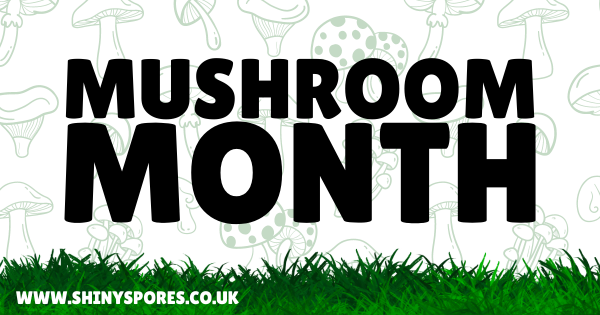Celebrating National Mushroom Month: A Journey Through Time

September is a special month for mushroom enthusiasts as it marks the celebration of National Mushroom Month! This occasion not only highlights the culinary delights that mushrooms bring to our tables but also offers an opportunity to explore the fascinating history of mushrooms and their diverse uses throughout modern history.
A Brief History of Mushrooms
Mushrooms have been a part of human history for thousands of years, with their use tracing back to ancient civilisations. The earliest evidence of mushroom consumption dates back to around 4000 BC in ancient Egypt, where they were revered as a food of the gods. The Egyptians believed that mushrooms contained magical properties and often used them in religious ceremonies.
Throughout the ages, mushrooms have been used not only for their culinary value but also for their medicinal properties. The ancient Greeks and Romans valued mushrooms for their nutritional content and health benefits. The Roman philosopher Pliny the Elder even documented the various types of edible mushrooms and their uses in his writings.
In Asia, mushrooms have played a vital role in traditional medicine. The reishi mushroom, known as “the mushroom of immortality,” has been used for over 2,000 years in Chinese medicine for its purported health benefits, including boosting the immune system and promoting longevity. Similarly, shiitake mushrooms have been celebrated for their flavour and health-promoting properties.
The Renaissance and Beyond
The Renaissance period saw a renewed interest in the culinary uses of mushrooms, particularly in Europe. French cuisine, in particular, embraced mushrooms, incorporating them into sauces, soups, and various dishes. The cultivation of mushrooms also gained popularity, leading to the establishment of mushroom farms.
In the 19th century, the rise of mycology—the study of fungi—led to a deeper understanding of mushrooms and their ecological significance. Researchers began to identify different species of mushrooms, expanding knowledge about their nutritional value and potential health benefits.
Modern Uses of Mushrooms
In contemporary times, mushrooms have found their way into various aspects of our lives. Beyond their culinary applications, mushrooms are increasingly recognised for their health benefits. Varieties such as portobello, cremini, and oyster mushrooms are praised for their rich nutrient profiles, offering vitamins, minerals, and antioxidants.
Furthermore, medicinal mushrooms like lion’s mane and cordyceps have gained popularity in the health and wellness community, touted for their cognitive-enhancing and energy-boosting properties. The rise of plant-based diets has also contributed to the resurgence of mushrooms as a meat alternative, with their umami flavour and hearty texture making them a favourite among vegetarians and vegans.
As we celebrate National Mushroom Month, it’s essential to acknowledge the rich history and diverse uses of mushrooms throughout modern history. From ancient civilisations to contemporary cuisine and health practices, mushrooms have woven themselves into the fabric of human culture. So, whether you enjoy them sautéed, grilled, or in a hearty soup, take a moment this September to appreciate the humble mushroom and its remarkable journey through time. Happy National Mushroom Month!









